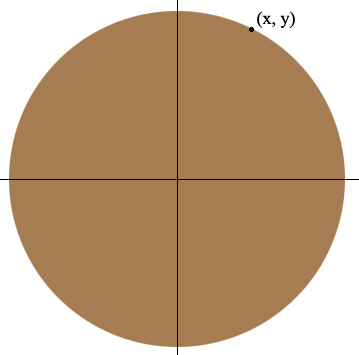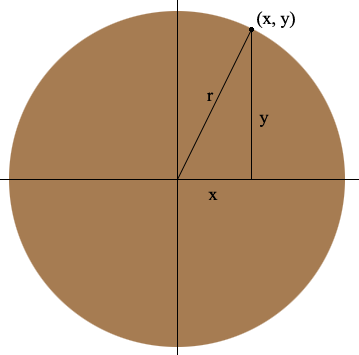| |||
| Math Central | Quandaries & Queries |
|
Question from Silvan: Hi, I just want to find the x,y values for the circumference of a circle... Lets take a clock having its centre at (0,0) in a graph. I feel it will be useful for me to draw a clock in a graph... :-) |
Hi Silvan,
The answer to your question relies on what is perhaps the best known result in all of mathematics called the Theorem of Pythagoras. The theorem states that
In any right triangle, the area of the square whose side is the hypotenuse (the side opposite the right angle) is equal to the sum of the areas of the squares whose sides are the two legs (the two sides that meet at a right angle).
Said algebraically the theorem is
If a right triangle has sides of length a, b and c where c is the length of the side opposite the right angle then a2 + b2 = c2.
The converse is also true
If a triangle has sides of length a, b and c and a2 + b2 = c2 then the triangle is a right triangle with the right angle opposite the side of length c.
Pythagoras lived from 570 to 495 BC but there is considerable evidence that this result was known much earlier.
Why does this have any connection to your question? Let me draw a picture of a circular clock face with centre at (0, 0) and with a point (x, y) on the circumference.

Next draw a vertical line segment from (x, y) to the x-axis and a line segment from (x, y) to (0, 0).

What I see now is a right triangle with sides of length x, y and r where r is the radius of the circle. Hence by the Theorem of Pythagoras, x2 + y2 = r2. The converse of the Theorem of Pythagoras implies that if (x, y) is any point in the plane and x2 + y2 = r2 then (x, y) must lie on the circumference of the circle with center (x, y) and radius r. This then gives you the answer to your question.
If (x, y) is a point in the plane then (x, y) lies on the circumference of the circle with center (0, 0) and radius r if and only if x2 + y2 = r2.
Penny
 |
||
Math Central is supported by the University of Regina and The Pacific Institute for the Mathematical Sciences.